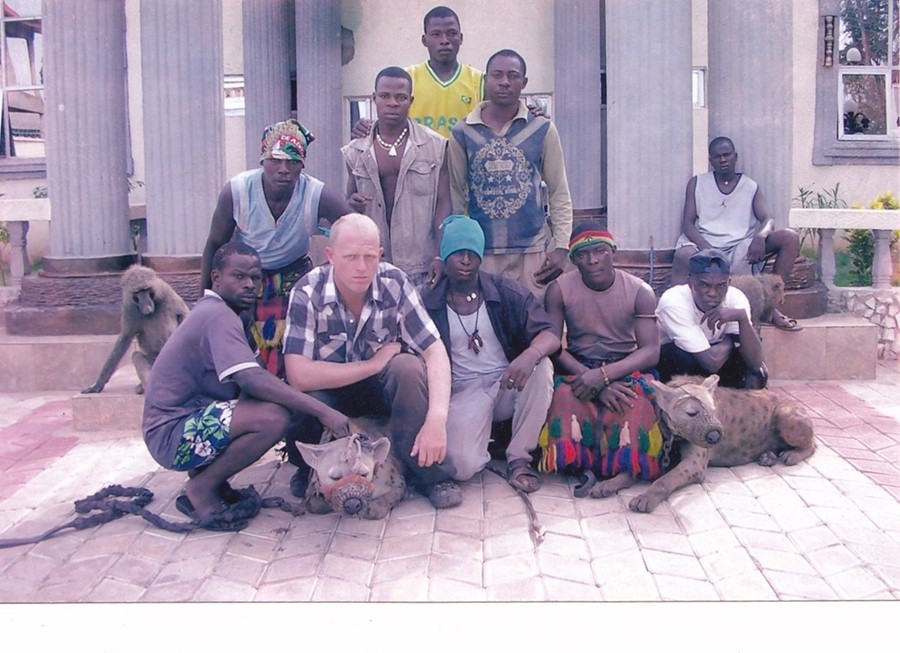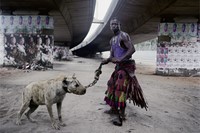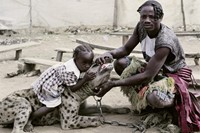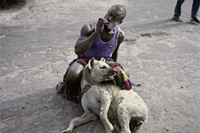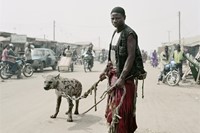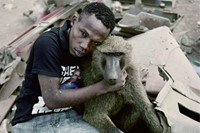A decade after photographing Nigeria’s hyena handlers, Pieter Hugo recounts the tale behind his series – and how he feels about Beyoncé’s appropriation of them
“They've almost become a cultural meme,” says South African photographer and Another Man contributor Pieter Hugo of his Hyena & Other Men series, which began as an email from a friend and snowballed into an incredible body of work. It’s an unexpected description of his photographs of Nigeria’s hyena handlers, but one that does much to express the current status of these images. For as well as being displayed in exhibitions and published in a now very rare book, these pictures have posted all over the internet, been graffiti'd on walls in Paris – even appropriated by Beyoncé.
It’s easy to see why these images garnered such a response: shot in the height of the Harmattan season, which gives the pictures a beautiful dusty quality, they portray a startling man-beast kinship – men and, in some cases their children, posing with fearsome wild animals including hyenas, rock pythons and baboons. They evoke a strange feeling of unease (is it nerves?) that almost makes you worry for the safety of those photographed, one which makes it hard to look away. A circus show trapped in time.
While these images are famous, the story behind them is less so. Here – ten years on – Hugo recounts the tale, revealing what led him to photograph these men and their animal companions, what the experience of shooting them was like and how he feels about their remarkable reception. Plus, he shares a never-before-seen image of him and his subjects.
“I received an email with a picture that was doing the rounds on the net – some guys on the street in Nigeria that looked like debt collectors. As soon as I saw it I knew I was going to go and photograph them. The first time I met them they were staying in this shanty town. I was apprehensive and didn’t know what to expect. I thought they were debt collectors and didn’t realise until later that they were actually circus people. It was stranger for them, seeing me, than it was for me, seeing a group of men with hyenas and rock pythons and baboons. They smoked a shit load of weed all the time and drank beer during the day, so that broke the ice a bit. They were just super easy-going guys, they were super laid-back. That’s my memory of them. I paid them for the shoot and still send them money from time to time. I still get phone calls from them too, we still chat.”
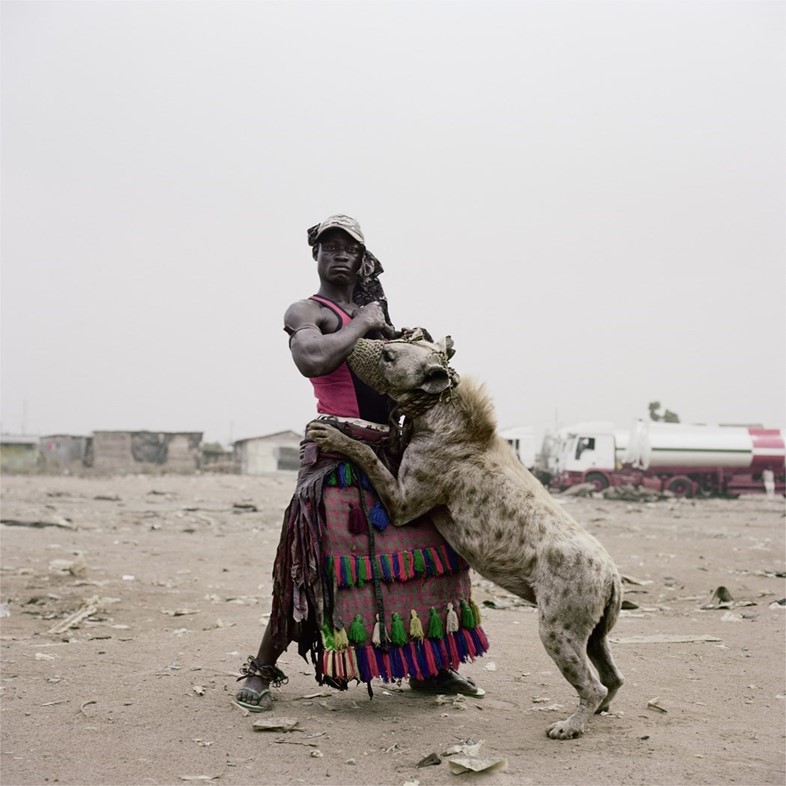
“I never saw the hyenas do anything aggressive but I never felt comfortable standing next to them. They’re not animals that you can domesticate. But the guys have this strange co-dependent relationship with them – because though they’ve been taken from the wild, they can’t be returned to it, and because the guys are dependent on them to make a living. The baboons were a different ball game. I felt really sorry for them because they displayed human-like emotions. They were almost self-conscious in a way, and it was very sad to see them in that environment, chained up. They would be much more rebellious and naughty than the hyenas and the guys would be quite severe with them, and that actually bothered me much more than the hyenas which were happy as long as they got fed. Their needs just seemed much simpler than those of the baboons.”
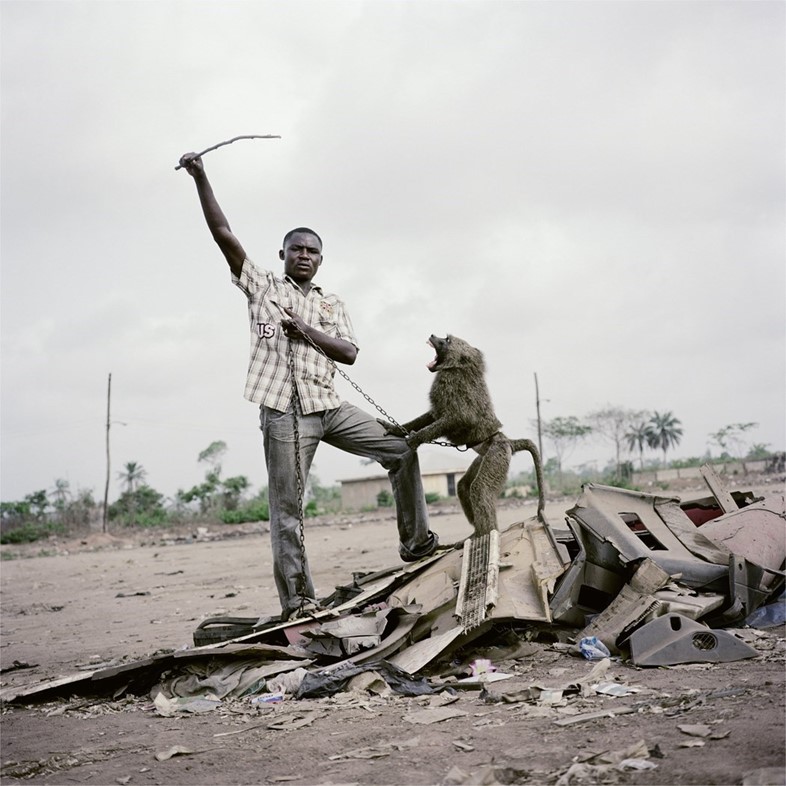
“I was totally overwhelmed by the response to the images. I often wonder why they had such a profound impact and honestly, I don’t have an answer. I don’t mind Beyoncé’s appropriation of the images in her ‘Run the World (Girls)’ music video, it’s a nice shout out to me, I just don’t particularly like the song. But they’re everywhere – they became a cultural meme and in some ways I’ve lost custodianship of them. Literally, I went to Paris and saw graffiti art all over the city of these guys from my photographs and it was like I didn’t own these pictures anymore.”

